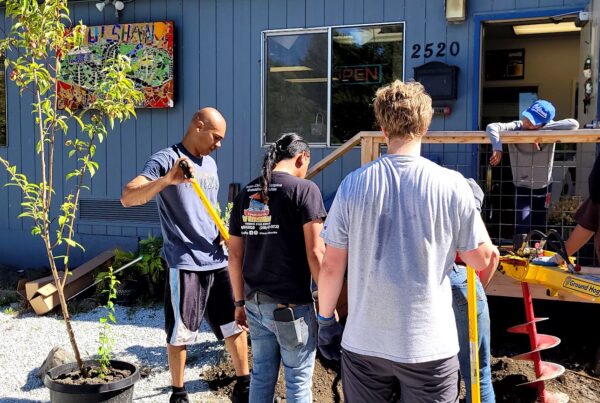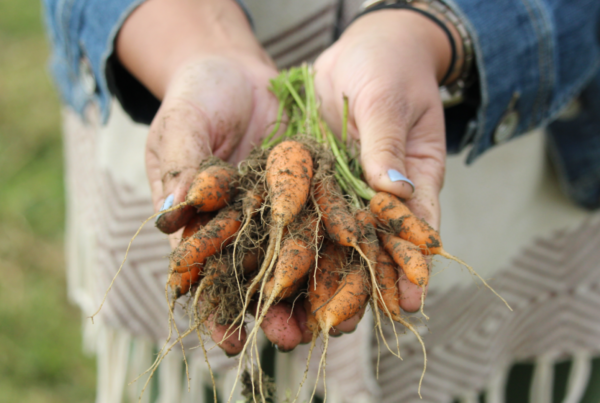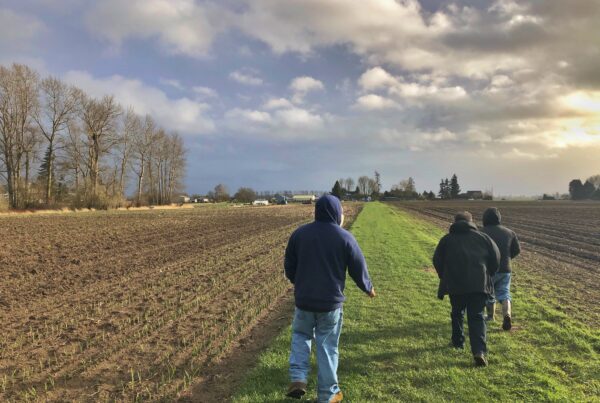As part of his Bank of America internship, Wylie Mao spent his summer working at Food Lifeline and learning about the work we do to stop hunger in Western Washington. As part of his experience, Wylie had the chance to ride-along with our truck drivers and see first hand the work that goes into getting food to those in need. Here are his reflections on his experience with Grocery Rescue.
Heading into my internship with Food Lifeline, I wouldn’t have expected that I would be spending my Friday waking up before dawn to ride in a truck making stops across the Puget Sound area. Turns out this ride-a-along has been my chance to see one of the most important parts of Food Lifeline’s daily mission – Grocery Rescue.
My day with Grocery Rescue starts before sunrise as I greet Don, a Food Lifeline driver, who has been driving this route for almost 2 years. By 5:30, nearly all trucks are on the road, cooling units are working hard, and empty boxes sit stacked neatly, waiting to be filled with nutritious and fresh food for Food Lifeline’s many meal programs, food banks and shelters.

At each stop on our route, Don parks the truck off to the side, loads a cart high with repurposed cardboard boxes, and heads into the back entrance. Today, we pick up from several QFC locations, Whole Foods, and Albertson’s.

Off to the side of each department’s storage rooms is a shelf or grocery cart stacked high with donated products. From the bakery come breads, pastries, and sweets with dented packages or only a few days left in on their expiration dates. Because of increasing demand for fresh bread baked daily, stores are able to reliably donate a large amount of bakery products.

Likewise, the aesthetically appealing piles of fresh fruits and vegetables we see in most grocery stores means that Don picks up lots of produce that is too ripe but still edible, or visually unattractive. Today we get entire boxes of potatoes from one store due to abundance in supply.

Next, Don opens the freezer and examines the meat, ensuring quality. Donated meat is frozen solid until it is distributed to local food pantries for safety. Before packing donations into boxes, Don makes sure that the products meet Food Lifeline’s strict food safety standards. To accept donations of perishable food, proof that it stayed under proper temperatures is required.

When all food is neatly packed away in boxes and sorted by type, it is carefully weighed and accounted for. Finally, we sort donations and stack them on pallets, ready to be unloaded at the warehouse.

By noon, we get back to Food Lifeline. Meat is hurried to the freezer and kept at -5 degrees F. Produce and bread, to the refrigerator. In total, over 4,000 pounds of food is diverted from being wasted. The same day or day following, volunteers pore through the donations with a second quality check. Along with the food donated by the dozens of other grocery stores and food suppliers all throughout the Seattle area, it is sorted, packaged, readied for distribution within hours.
My ride-a-along with just one of Food Lifeline’s 14 trucks, helped me connect the dots between how Food Lifeline is able to distribute over 36 million pounds of food every year and at the same time reduce food waste. While it is only 1pm in the afternoon and my day is almost over getting the chance to see this part of Food Lifeline’s mission—a simple, yet crucial one—is an experience that has given me a more rounded understanding of the work we do here.







